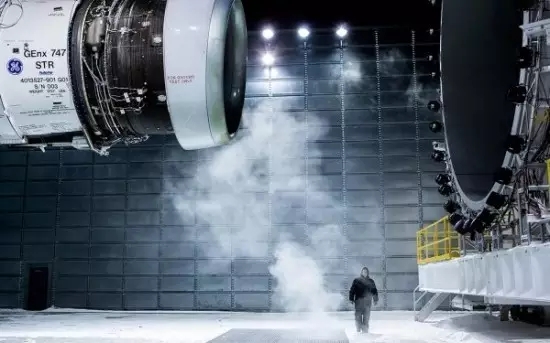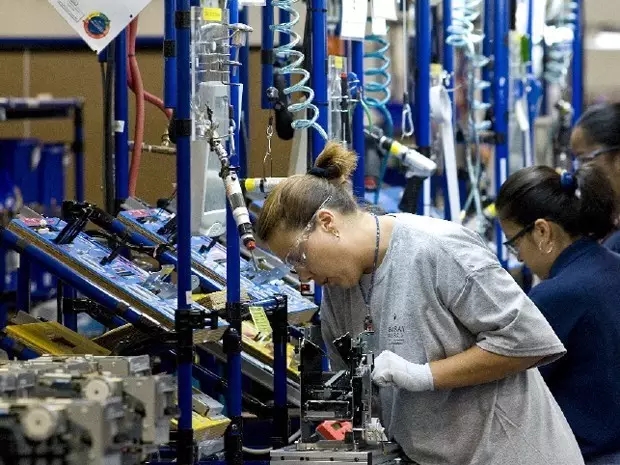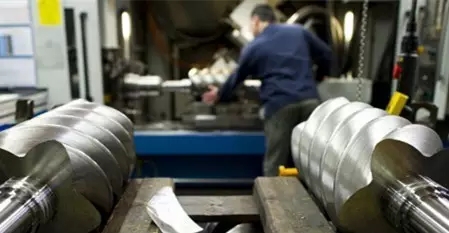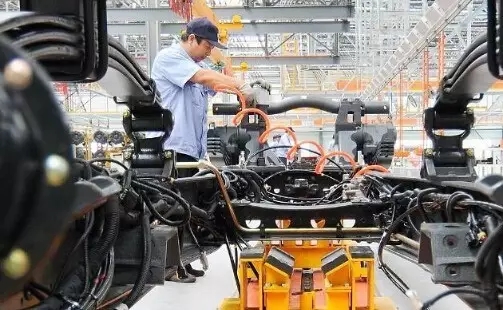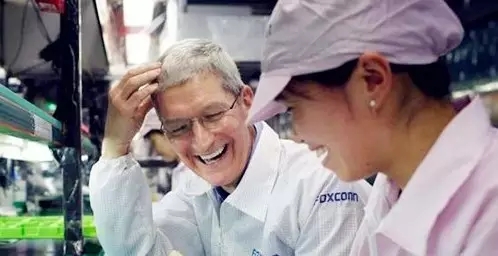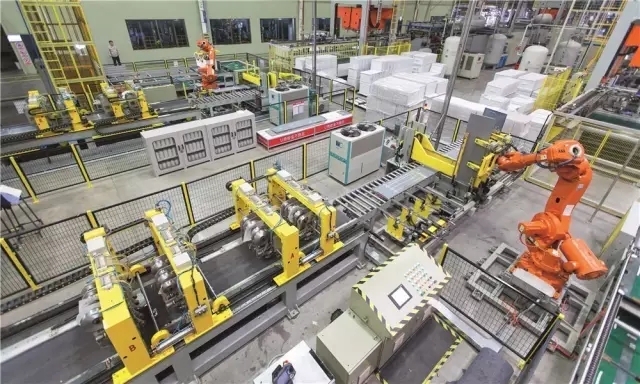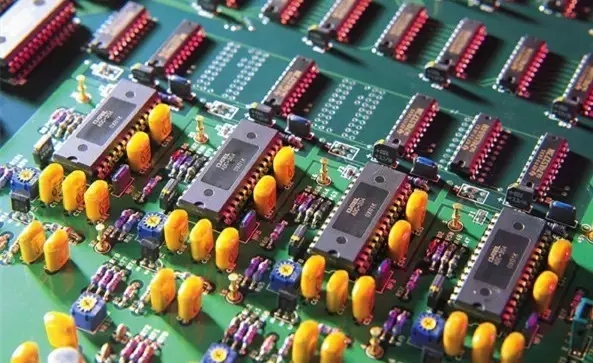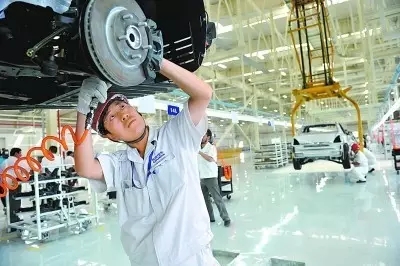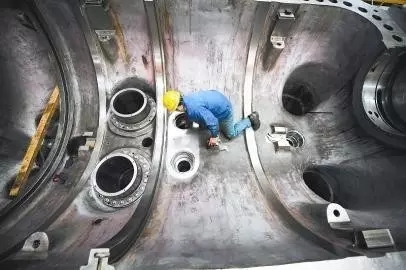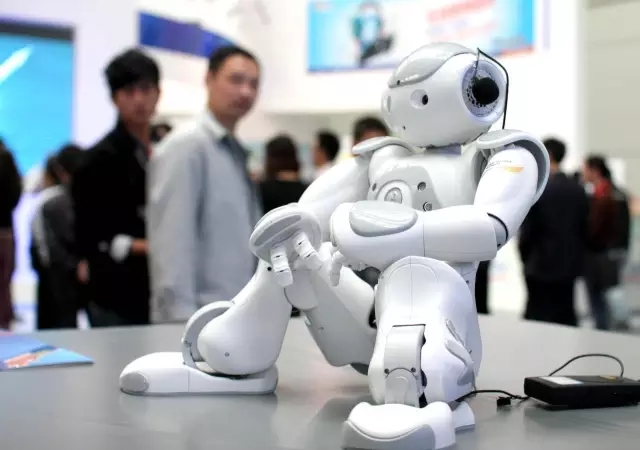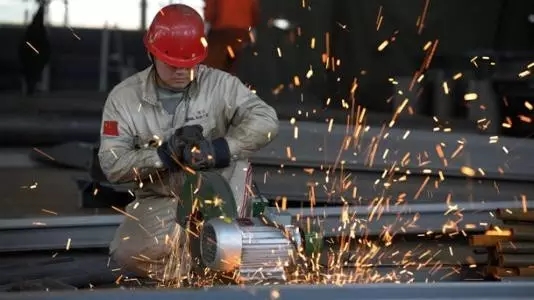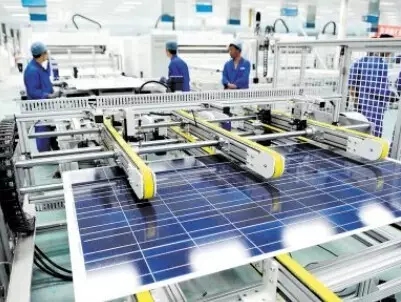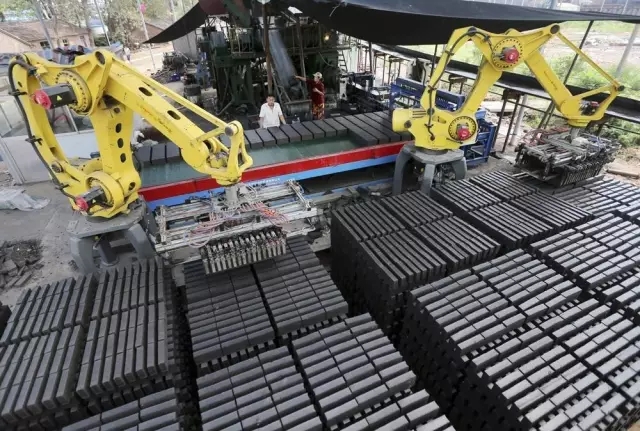The trend of manufacturing transfer has a lot to do with the future and destiny of the country. There have been four large-scale manufacturing migrations around the world, and innovation factors are an important driving force for the large-scale manufacturing migration. Currently, the biggest reality facing manufacturing upgrades and migration is the decline in total factor productivity.
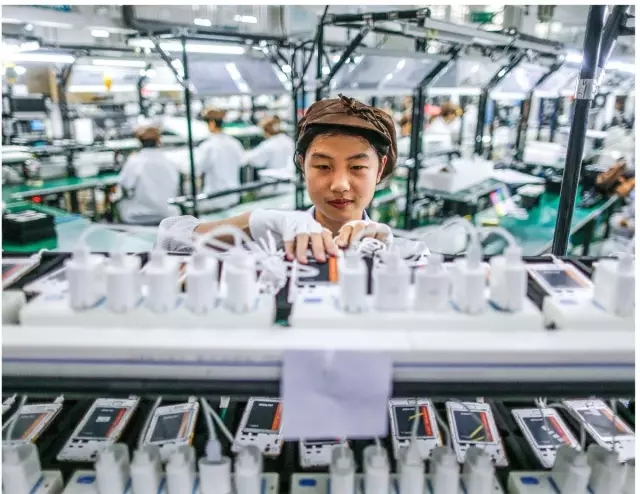

It is generally believed that there have been four large-scale manufacturing migrations on a global scale: the first time in the early 20th century, the United Kingdom transferred part of the “excess capacity” to the United States; the second time in the 1950s, the United States transferred steel, steel, Traditional industries such as textiles were transferred to defeated countries such as Japan and Germany; for the third time in the 1960s and 1970s, Japan and Germany transferred labor-intensive processing industries such as light industry and textiles to the Asian "Four Little Dragons" and some Latin American countries; Four times in the early 1980s, developed countries such as Europe, America and Japan and newly industrialized countries such as the "Four Little Dragons" in Asia transferred labor-intensive industries and low-tech and high-consumption industries to developing countries. Therefore, China has gradually Become the biggest undertaking and beneficiary of the third world industrial transfer.
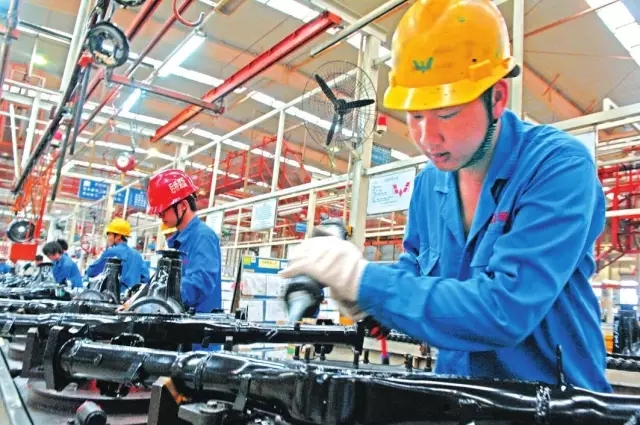

Professional institutions such as McKinsey and Boston Consulting Group, as well as various economists and media, analyze the global manufacturing transfer from the perspective of "cost structure" (including comprehensive costs such as manpower, land, energy, and institutional transaction costs), and then Study and judge whether the future manufacturing industry will flow to low-cost countries such as India and Vietnam, or return from China to Europe and the United States. The important role of innovation factors in the process of global manufacturing migration has not received enough attention.
The United States: Undertake the global and manufacturing transfer with manufacturing process innovation
The United States has taken a long time to undertake the global transfer of production capacity and realize the rise of the manufacturing industry. Even though the United States already has 7 of the world's 10 largest industrial companies around 1850, it does not mean that the United States has truly become a manufacturing power. In the industry and technological competition, it was not until 1920 that the American manufacturing industry completely stood on the top of the world without any dispute. This was mainly due to the comprehensive innovation of the United States on the manufacturing and product sides.
In the United States at the beginning of the 20th century, great inventions and great companies were flashing everywhere. Ford’s Model T and Cadillac’s electronic starting device opened up the era of human cars. Warner Bros’ "Jazz Singer" drove the prosperity of sound movies. Artificial gum has reshaped the American manufacturing industry, and telephone and electrification have fully upgraded the industrial infrastructure of the United States.
In particular, the large-scale promotion of assembly line production methods and large-scale mass production, in addition to diluting fixed costs, also brought a large number of engineers together to engage in technological research and development, which greatly promoted technological innovation. At that time, the organization of British factories was relatively traditional, and small and medium-sized workshops were the favorite of British society, but such enterprises were unable to achieve economies of scale and systematic R&D innovation.
By the 1920s, the gap between Britain and the United States in the manufacturing sector was huge. At that time, official data showed that the R&D expenditure in the United States accounted for 2.5% of the national product, while the United Kingdom during the same period was only 2%; the United States civil engineers accounted for as high as 13% of the total employment population, significantly ahead of the United Kingdom’s 5 percent. %. In 1929, the three pillar industries of the British economy were railway shipping, tobacco and alcohol, and textiles, while the top three dominant industries in the United States were agricultural equipment and construction machinery, vehicles and aircraft, steel and non-ferrous metals. Britain, an industrial power that is ambition to compete globally, has sunk to the point of relying on tobacco and alcohol to survive.
Japan and Germany: Undertake the global manufacturing shift through innovation in a collaborative system
After the end of World War II, the United States gave Germany and Japan priority in the development of traditional industries such as steel, textile and light industry in implementing the industrial plan for the revival of Europe and Japan. However, Germany and Japan are unwilling to accept this industrial arrangement. If they passively accept the transfer of low-end manufacturing, they will always underperform the United States in future industrial competition. Since then, Germany and Japan have not only focused on the development of high-value export industries such as automobiles, machinery, and electronics, but more importantly, they have undertaken the transfer of global manufacturing with an efficient and complete national industrial cooperation system.
Why can Germany and Japan have the strongest SME group in the world? Germany refers to this as the "hidden champion company", and Japan refers to this as "the tiny world's top company." The industrial structure of Germany and Japan is becoming more and more refined. Many companies have only researched one kind of part and made only one product for decades. They are well-known in the world and have very good benefits. The products they manufacture are based on the unique technology that they are honing in on the market. These "hidden champion companies" do not seek to grow bigger, but strive to become the "only company" with some kind of world number one. So far, if many high-end manufacturing industries in China do not use key materials and core components from Germany and Japan, such as aviation glass, chips, bearings, and optoelectronic products, their competitiveness will be greatly reduced.
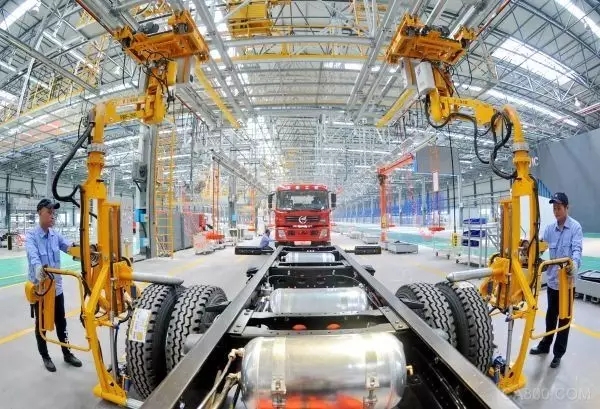

Germany and Japan are leading the world in basic industrial technology, which is a major foundation for the two countries to maintain their status as winners in the global manufacturing migration. To cite two examples, China has the largest rare earth reserves in the world, but lacks technology to turn it into materials. These material technologies are all developed with decades of accumulation, and these materials can be nano-scale, and they can be stored in mobile phone chips. These all require specialized machine tools, which are not available in the United States, but they are available in Germany and Japan.
Semiconductors are called "informatization food." Advanced lithography machines are used to manufacture semiconductor chips. 70% of the world's semiconductor lithography machines are made in Japan, and Germany supplies the core optical components. The lithography machine is the most precise, most critical, and most expensive equipment among all the machinery that mankind can manufacture so far. When the wafer is subjected to lithography operations, the positioning accuracy can reach 0.01 micron, which is equivalent to one hundred thousandth of a human hair.
South Korea: To undertake global manufacturing transfer with industrial chain integration and innovation
In the process of transferring manufacturing capacity to the Asia-Pacific region, Taiwan and South Korea have played an important role. Among them, Taiwan is good at foundry and South Korea is better than industrial chain integration. However, do not ignore the role of innovation factors. Taiwan's semiconductor manufacturing level is world-class, Hon Hai Precision (called Foxconn in mainland China) has assembled almost all Apple iPhones and iPads, and TSMC and MediaTek are world-class giants in the field of chip manufacturing.
Beginning in the early 1990s, the American company was responsible for the design, and Taiwan was responsible for the foundry of wafer fabs. The investment was huge, from 4 inches, 6 inches, 8 inches to 12 inches now, from wafer manufacturing to cutting, packaging, Testing is done by different companies in Taiwan, forming an unprecedented large industrial chain, accounting for more than half of the global chip manufacturing market share. At present, TSMC has achieved a 16-nanometer process. The mainland's Huawei HiSilicon and Spreadtrum must use TSMC's process to enable mass production of high-end mobile phone chips designed.
The iPhone and iPad are only "laboratory products" at Apple. Whether they can become mass consumer products or not, there is a big gap between them-whether anyone can produce this product on a large scale. It is not too difficult to design a product in the laboratory and then spend a long time to produce a sample.
However, large-scale manufacturing requires workers with no technical background to manufacture, which requires a very reasonable planning process and a very precise design of the mold. There are many patented technologies involved. These molds are designed by Hon Hai itself and have a "cross-licensed" relationship with Apple. In other words, for a product to achieve mass production, these patents on the production process must be used.
Samsung Electronics is the backbone of South Korea’s manufacturing industry, and its international competitiveness is based on the “full industry chain” model, that is, all-round investment in chips, flash memory, LCD panels, flat-screen TVs, and mobile phones. Samsung's "full industry chain" model pursues not only cost advantages, but more importantly, technological accumulation and innovation breakthroughs.
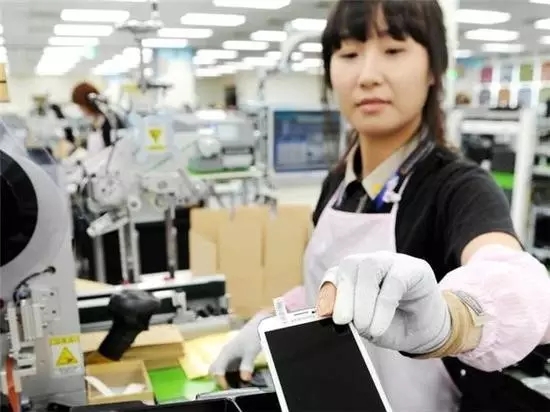

The "whole industry chain" model can enable South Korea's Samsung to have an in-depth understanding of technology and achieve efficient technological innovation and product innovation. After successfully mastering storage and non-memory chip technologies, Samsung Electronics has successively mastered core technologies such as TFT-LCD, PDP, organic light-emitting display (OLED), mobile chips, and flash memory chips. These technologies are actually semiconductor technologies at the root. These semiconductor chip technologies largely benefit from the previous in-depth mastery of memory chip technologies, and it is much easier to expand to other chip technologies.
China: Undertake the global manufacturing transfer with system strength
Mainland China really began to undertake the transfer of global manufacturing, it should be after 2000. At present, the well-known BAT (Baidu, Tencent, Alibaba), and hardware manufacturers related to Haier, Lenovo, Huawei, ZTE, Xiaomi, Foxconn and other manufacturers and brands have gradually matured. China's manufacturing industry has become a self-sufficient and capable overseas brand. OEMs can also launch a huge system of their own products. This system was first collectively referred to as the "red supply chain" in the British Financial Times published in September 2013. At present, the overall profit rate of China's manufacturing industry is still relatively low, but the advantages of the system have been formed.
Many smart phones, home appliances and PC products exported by China have a profit margin of less than 5%. People take it for granted that 95% of the profits are earned by others. Entrepreneurs worry about it all day long, workers are exhausted, and the country consumes resources. , Leaving pollution, in the end can only make a little money from it. Many people have not figured out that behind this profit rate is China's powerful industrial system and market system.
In addition to the introduction of some core and high-end electronic components, the 95% part is more that companies need to pay workers a certain amount of wages, pay a certain amount of factory rent, pay a certain amount of water and electricity, and pay a certain amount of various taxes and fees. Payment of a few yuan in commission to agents, a few yuan in logistics costs, and a few yuan to parts dealers...this is the largest part of the product cost.
After that, the cost will not disappear for no reason. It only means that the renminbi will be transferred from some people to others. To supply accessories, parts suppliers undoubtedly need their own labor, management, factory rent, water and electricity, logistics, storage, etc.; power supply bureaus need power grid construction, power station construction, and even coal mining, power equipment manufacturing; logistics companies To provide efficient logistics, you need vehicles, drivers, and highways; then, in the next step, you also need to build roads, you need reinforced concrete, and you need... on the surface, the profit margin is less than 5%, and in essence, it needs the entire country’s Strong support from the raw materials industry, energy industry, infrastructure, logistics network, supporting industries, and market system.
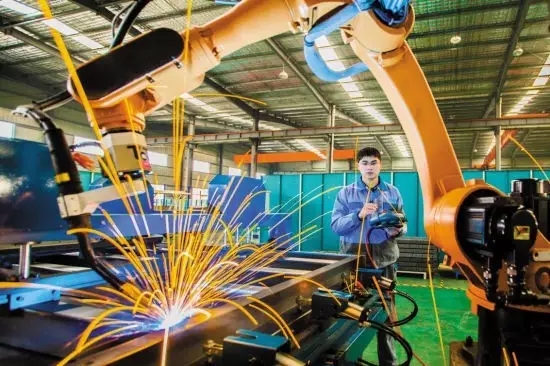

The reliability and speed of the manufacturing industry are more important than the price, and the shortage of goods definitely brings more losses than the high price. Relying on China's investment in a large and complete supply chain and infrastructure, Chinese suppliers appear to foreign companies to be faster and more reliable.
For manufacturing powers such as Europe, the United States, Japan and South Korea, the "red supply chain" is a system that is both friends and enemies. Without it, many emerging products such as the iPhone may not be available in a short time, nor will they be at the current price. However, China's own products launched through this system also carry speed, flexibility, low cost, and some creativity, making it difficult for traditional industrial powers to compete with them in certain markets because they lack this system and conditions.
The biggest obstacle to innovation
In today's world, the biggest reality facing manufacturing upgrades and migration is the decline in "total factor productivity." The media and economists pay more attention to the changes in domestic labor conditions. For example, the implementation of the "five social insurance and one housing fund" system, the increase in hot money, and the increase in wages and prices, as well as the changes in the market and industrial structure, have caused mainland China to gradually lose its early days. Cost advantage. "Factor productivity" pays more attention to relative changes. For example, in the 10 years since 2006, domestic labor costs have risen by nearly five times. This does not mean that cost competitiveness will be inevitably weakened. If the degree of automation and organizational efficiency are improved more .
In the past, we habitually regarded Latin America, Eastern Europe, and most of Asia as low-cost regions, and the United States, Western Europe, and Japan as high-cost regions. Nowadays, this is an outdated view of the world. The subtle changes in wages, technical efficiency, energy costs, interest rates and exchange rates, and other factors year after year have quietly but greatly affected the “cost competitiveness of the global manufacturing industry”. "Atlas.
In the past ten years, global factor prices have risen to varying degrees, but the numbers are not the key. The important thing is whether they are linked to performance and whether the rise in factor prices is reasonable compared with profits.
Regrettably, the decline in "total factor productivity" has led to (and even continues to cause) a pessimistic rate of return on manufacturing investment. Coupled with the glass wall between technological innovation and market returns, the global manufacturing industry will continue to face a pessimistic outlook.
Nowadays, mainstream American society has paid little attention to competition from China, believing that it is impossible for China to win with a new generation of manufacturing, and has gradually formed a complete discourse on "why China cannot have the next generation of manufacturing." With the maturity of technologies such as smart robots and 3D printing, China has no advantage at all. Multinational companies are trying to move their high value-added manufacturing industries back to the United States and Europe.
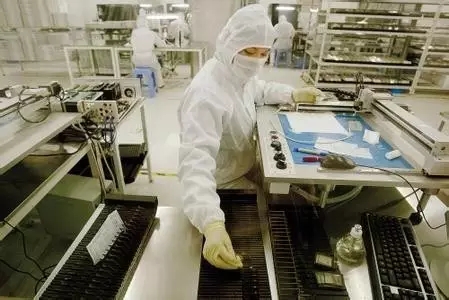

China has launched the "Made in China 2025" ten-year plan, which aims to use advanced manufacturing technologies, such as robotics, 3D printing and the industrial Internet, to achieve efficient and reliable intelligent manufacturing. At the same time, China has launched another national plan-"Internet +", seeking to combine mobile Internet, cloud computing, big data and the Internet of Things with modern manufacturing. Even if the hardware transformation and upgrading of China's manufacturing industry can be successfully realized, it still faces three real challenges:
The first challenge: Robots in Europe, the United States, and China consume the same amount of electricity, work exactly as instructed, and do not complain or join a union. Is it necessary for European and American industrial companies to transport raw materials and electronic components from all over the world to China, let robots complete the assembly of the finished products, and then ship them back to the United States? This makes no economic sense at all. European and American companies can produce locally at almost the same cost, eliminating the transportation link.
The second challenge: Most of China's robots are not produced domestically, and even if some are assembled domestically, they still rely heavily on imports of core components from foreign countries.
The third challenge: European and American industrial companies have had great difficulties in recruiting technical talents in China because of the management and communication skills required by advanced manufacturing and the ability to operate factories based on complex information. The lack of professional and technical personnel is already the weak underbelly of China's advancement of advanced manufacturing and service industries. What's more, China's manufacturing industry has faced unconventional competitive pressure from its main rivals.
The Chinese economy with manufacturing as its backbone has reached the most critical moment, and every step it takes now will have an extremely profound impact on the future.
The “Made in China 2025 Blue Book (2016)” published by the official agency in September pointed out that under the influence of factors such as the application of smart manufacturing technology and changes in the overall cost of the manufacturing industry, the layout of the global manufacturing industry is gradually adjusted: the manufacturing production of multinational companies is becoming more developed. Countries are accelerating the trend of returning, and at the same time, the global manufacturing industry is accelerating the transfer to lower cost regions such as Southeast Asia, South Asia, and Africa.
The former is the cost dividend derived from technological innovation in developed countries, and the latter is the attractiveness of low-cost countries with the advantage of cheap labor. China's manufacturing industry, sandwiched between the two, is losing its labor cost advantage, while technology and industrial upgrading are facing considerable challenges.
The trend of global manufacturing migration
My country is already seeking to reduce the overall costs of Chinese companies, that is, factor costs, transaction costs, and institutional costs, and keep as much manufacturing capacity as possible in China. At the same time, the national innovation system is stepping up its construction, and the change in the cost structure is not the core of the problem, because the real driving force behind the global manufacturing migration is technological innovation and industrial upgrading.
In the past, traditional industrial powers generally tended to outsource manufacturing to low-cost areas. This is not to withdraw from the manufacturing industry. On the contrary, it is precisely to strengthen the control of the industrial chain. Google acquired Motorola, entered the field of robotics and developed self-driving cars with a high profile. Google's vision is that after Internet technology is continuously integrated into the manufacturing industry, it can establish a dominant position. Once all links in the manufacturing industry are taken over by "cloud computing", it will be able to exert sufficient influence and even control over the manufacturing industry.
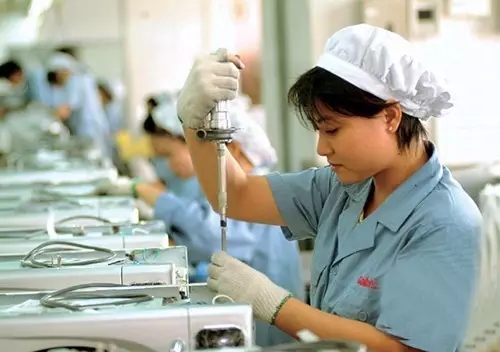

The trend of manufacturing transfer has a lot to do with the future and destiny of the country. The United States has now withdrawn from many manufacturing fields, but has not withdrawn from the industrial chain, but specializes in standards and technology. Japan is currently following this path. Technologies such as 3D, 4k, and quantum dots are all developed by Japan and carried forward by Chinese companies. Today, for Sharp, Panasonic, Toshiba and other transformational medical equipment and energy, Tesla's TV is provided by Panasonic.
Cutting-edge technologies and key innovations are still the main battlefield of traditional industrial powers, and Chinese manufacturers still need to track their technological routes. China's "demographic dividend" is disappearing, while the "technical dividend" has just begun. China's manufacturing industry as a whole still lacks technology and capital accumulation, original innovation faces high costs, and risks are unpredictable.
The real driving force of industrial innovation is the market. China's manufacturing industry still needs to start with small things and small innovations. Many small innovations may eventually unintentionally move the big market. China's manufacturing industry can rely on its unique market and supplier system to create advantages in the global manufacturing migration process and master the complete ecosystem from manufacturing materials to sales channels.
Recently, the Boston Consulting Group's Global Manufacturing Cost Competitiveness Index showed that the relative cost of manufacturing in the world economy has changed, which has prompted many companies to rethink their purchasing strategies in the past few decades and the choice of locations for future development of production capacity. In the process of developing the index, think tanks observed that cost competitiveness has increased in many economies, while other economies have relatively declined. Through this index, think tanks found four significant patterns of changes in manufacturing cost competitiveness:
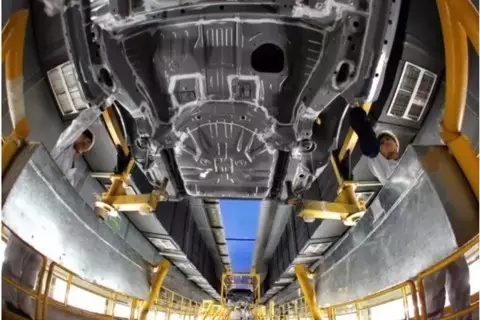

1. Under pressure:Several economies that have been considered as low-cost manufacturing bases in the past have faced pressure from a significant reduction in their cost advantages since 2004 due to a combination of multiple factors. For example, it is estimated that China’s manufacturing cost advantage over the United States has weakened to less than 5%; Brazil’s manufacturing costs are higher than Western Europe; the cost competitiveness of Poland, the Czech Republic and Russia has also been relatively weakened, and their current manufacturing cost levels It is comparable to the United States and only a few percentage points lower than the United Kingdom and Spain.
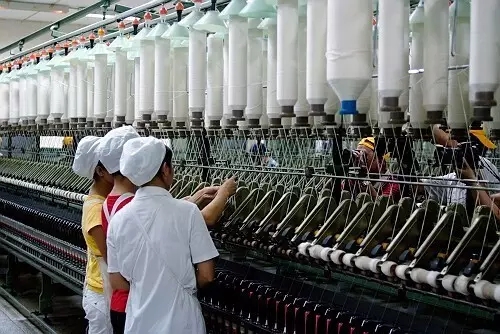

2. Continue to weaken:The competitiveness of economies with relatively high manufacturing costs over the past decade has continued to weaken, and their manufacturing costs are 16%-30% higher than that of the United States. The main reasons are low productivity growth and higher energy costs. Economies that continue to weaken competitiveness include: Australia, Belgium, France, Italy, Sweden and Switzerland.
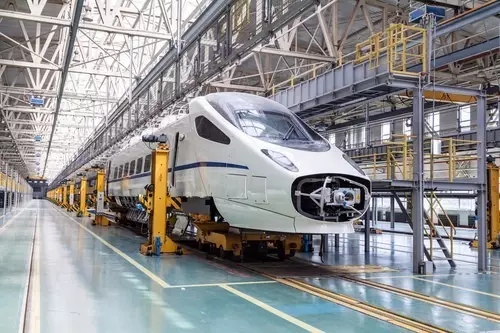

3. Maintain stability:Over the past decade, many economies have remained stable relative to the manufacturing cost competitiveness of the United States. In economies such as India and Indonesia, although wages have increased substantially, the rapid increase in productivity and currency depreciation have suppressed costs. Compared with the dynamic balance of India and Indonesia, all the cost drivers we analyzed have remained relatively unchanged in the Netherlands and the United Kingdom. The cost competitiveness of these four economies makes them likely to become the manufacturing leaders in their regions in the future.
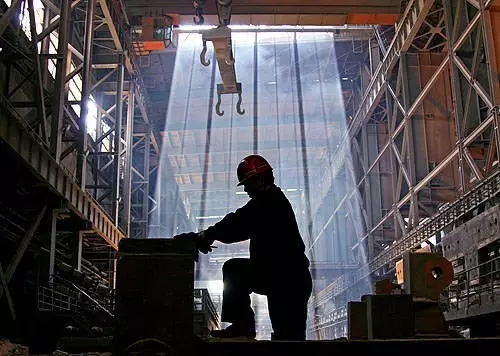

4. Global Rising Stars:Compared with other top 25 exporting economies in the world, the cost structure of manufacturing in Mexico and the United States has improved more. Due to low wage growth, continuous improvement in productivity, stable exchange rates, and huge energy cost advantages, these two economies have become emerging stars in the global manufacturing industry. The think tank estimates that the current average manufacturing cost per unit cost in Mexico is lower than that in China. Among the world's top 10 commodity exporting countries, except for China and South Korea, manufacturing costs in other economies are higher than those in the United States.





